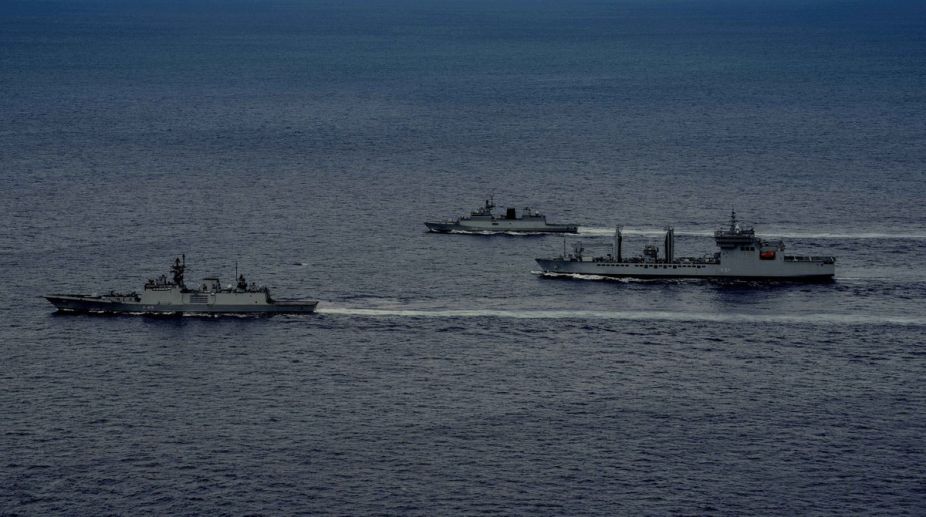The eight-day Malabar naval exercise involving Indian, American and Japanese navies will begin from Thursday (7 June), off the coast of Guam in the Philippine Sea, with a focus on greater inter-operability in the strategically important Indo-Pacific region.
The mega war game would take place in the backdrop of China’s growing expansionist behaviour in the Indo-Pacific region. Whereas, China has been suspicious about the purpose of the Malabar exercise as it feels that the annual war game is an effort to contain its influence in the Indo-Pacific region.
Advertisement
On 4 June, three Indian warships had set sail for the Western Pacific to join the US and Japanese naval vessels for the latest edition of the Malabar military exercise.
The exercise begins days after the Pentagon in a largely symbolic move to reflect new US national priorities changed the name of the Pacific Command to the US Indo-Pacific Command.
The command is responsible for all US military activities in the greater Pacific region. It has about 375,000 civilian and military personnel assigned to the area, which includes India.
India has fielded stealth frigate INS Sahyadri, missile corvette INS Kamorta, fleet tanker INS Shakti and long range maritime patrol aircraft P8I for the exercises that were first established in 1992 between India and the US.
The US has brought in its over 100,000-tonne USS Ronald Reagan, a nuclear-powered carrier with F/A-18 fighters, early-warning and electronic warfare aircraft, and other frontline assets including a nuclear attack submarine and P-8A patrol aircraft.
The Japanese have sent one of the two 27,000-tonne helicopter carriers, a Soryu-class submarine, Takanami class destroyer JS Suzunami and Kawasaki P-1 maritime aircraft.
It is for the first time the exercise is being conducted off Guam. In 2017, it was held on the Eastern Sea Board of India, off Chennai and Visakhapatnam.
The scope of the June 7-15 war game includes professional interactions during the Harbour Phase.
The sea phase includes a diverse range of activities at sea including aircraft carrier operations, air defence, anti-submarine warfare, surface warfare, visit board search and seizure (VBSS), joint manoeuvres and tactical procedures.
Earlier, the US Navy statement had said the exercise will feature both ashore and at-sea training.
“Training will focus on high-end war fighting skill sets, subject matter expert and professional exchanges, combined carrier strike group operations, maritime patrol and reconnaissance operations, surface and anti-submarine warfare, medical operations, damage control, helicopter operations and visit, board, search and seizure operations,” US Navy said.
“Each iteration of this exercise helps to increase the level of understanding between our sailors and inter-operability between our three navies,” the US Navy said.









